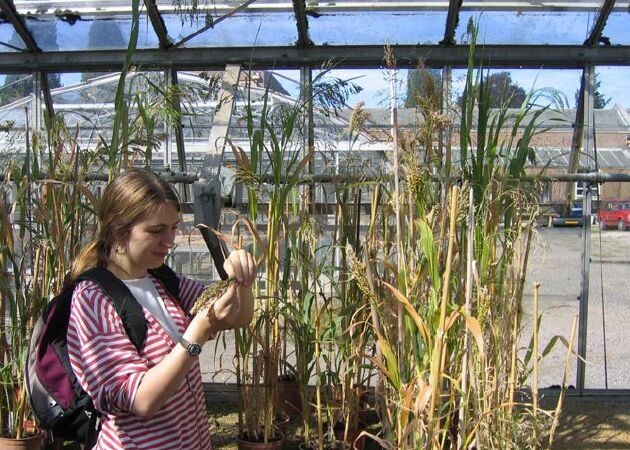Forum advocates public participation in archaeology

Dr. Harriet Hunt, a member of the project “Origin and Spread of Broomcorn and Foxtail Millets,” samples millet land races for genetic research.
The era of public archaeology has arrived, said Wang Wei, director of the Institute of Archaeology at the Chinese Academy of Social Sciences (CASS) and a CASS Member, at the Shanghai Archaeology Forum, which was held from Dec. 13 to 18.
A growing number of scholars have realized that archaeology is not merely about fieldwork and academic research. It is also important to launch archaeology lectures for the general public, to compile and publish readable archaeological books, and to publicize archaeological achievements to expand public access to archaeological sites and museums, thereby involving them in archaeological development, Wang added.
“The Shanghai Archaeology Forum has instituted public archaeological lectures. Moreover, we plan to post the content of the lectures online, so that more people can get a taste of archaeology’s charm,” Wang said.
Generally, the public has a keen interest in human history, especially in the origin of the society they are in. Charles Higham, a professor from St Catharine’s College at the University of Cambridge, said that archaeologists are responsible for informing and guiding the public.
Although a field excavation normally gathers a crowd of onlookers, related media coverage is confined to a small number of experts and scholars only, Higham said.
It is well known that public support is vitally important to research funding and the protection of cultural relics, but it has never drawn enough attention, Higham said. Archaeological sites are valuable, rare resources that keep track of the past of humanity, so only through public participation can they be better protected, he said.
Vasant Shinde, a professor from Deccan College in India, called on world archaeological organizations to unite and address major issues related to ancient cultural heritage.
First, public lectures, popular literature, exhibitions and tourism of heritage sites can be utilized to promote the importance and contribution of ancient culture to local, national and world history.
Second, there are great present and future challenges in terms of the protection of archaeological sites and preservation of artifacts. Without the participation of local residents and methodologies of community archaeology, protection work is hardly sustainable, Shinde said.
At the forum, Colin Renfrew, a professor of archaeology at Cambridge, was honored with the “Shanghai Archaeology Forum Lifetime Achievement Award.” Awards were also granted to 10 major field discoveries and 11 research achievements in the past three years.
In recent years, research methodologies, techniques and facilities of Chinese archaeology have caught up with international standards. At the same time, archaeological cooperation between China and other countries is making robust progress. The “Origin and Spread of Broomcorn and Foxtail Millets,” which received a research award at the forum, is one example of cooperation between Chinese and foreign archaeologists.
Li Yu and Zha Jianguo are reporters at the Chinese Social Sciences Today.

 PRINT
PRINT CLOSE
CLOSE